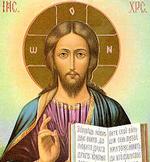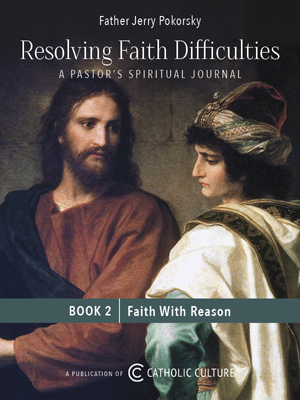Make your gift today!
Help keep Catholics around the world educated and informed.
Already donated? Log in to stop seeing these donation pop-ups.
Catholic Activity: Santa Claus
Origin and explanation of the "split-personality" of Santa Claus/St. Nicholas.
DIRECTIONS
After the Reformation, the feast and veneration of St. Nicholas were abolished in many countries, and the new figure of the Christmas Man substituted, so that soon the people in those countries forgot St. Nicholas who had once been so dear to them. Only here and there a trace of the traditional Christmas Saint would linger on, as, for example, the pageant of the "boy bishop" in England; or in the name Pelznickel (fur-Nicholas) which many people in western Germany gave to their Christmas Man (Pels- nichol now among the Pennsylvania Dutch). In Holland, however, it was not so easy to obliterate the memory of the Saint because the Hollanders, a nation of seafarers, had also venerated him for centuries as the patron of their ships. Dutch boats used to carry a statue of the Saint as the figure-head on their prows. When the Calvinists in Holland undertook to replace St. Nicholas with the Nordic figure of the Christmas Man, they did not succeed beyond obliterating the details of his religious past. To this day the hero of Dutch Christmas lore stubbornly retains his popular name of Sinter Klaas, as well as his Bishop's garments. The belief that he visited little children on the eve of his feast day was never abandoned, and his annual arrival in Holland has remained the same over the years. He comes mounted on a white charger, in awe-inspiring majesty, visiting the homes much like Santa Claus, except that there is more religious significance.
Wherever the Hollanders settled in the New World, whether in the first Dutch colony of New Amsterdam on Manhattan Island, or later in the colonies along the shores of the Hudson, they celebrated their feasts in the traditional way. The gift-bringer was good old St. Nicholas, the Bishop, who came on the eve of December sixth to fill their children's wooden clogs with his presents.
After Britain established the colony of New York, the English settlers and immigrants found the kindly figure of Sinter Klaas, in his becoming robes, more appealing than their own "Father Christmas," especially since St. Nicholas was so closely associated with gift-bearing to children, a custom which was not practiced by Father Christmas in England.
During the eighteenth century St. Nicholas gradually became the accepted gift-bringer for most children in New York, and, adhering to the Dutch pronunciation, the word "Santa Claus" was coined from their Sinter Klaas. The venerable figure was then tossed into the melting pot of Americanization. Santa Claus no longer appeared as a Bishop, but as a combination of Father Christmas and St. Nicholas, and his visit was transferred from the eve of December sixth to Christmas. In place of the Bishop's robes he donned the secular dress of Father Christmas, but kept the cheerful colors of his past, the popular Dutch form of his name, and also St. Nicholas' legendary practice of depositing his-gifts during the night in shoes or stockings. From the "Christmas Man" he acquired his home and work factory at the North Pole, the sleigh and the reindeer and the custom of sliding down the chimney, so familiar to all in Moore's popular poem, "'Twas the Night Before Christmas."
During the nineteenth century the figure of Santa Claus became a household word in New England, in fact along the whole eastern seaboard. From there it spread rapidly through the rest of the country, and now millions of children thrill in delight and awe at the sight of him. They tell him what they want for Christmas; they write letters to him; they give him the complete affection and confidence of their hearts—unaware of his "split" personality.
The modern story of Santa Claus, as told now to children, is more of a fairy tale. Its historical background and the charming legend of St. Nicholas are not generally known. There have been many changes made since the days of gentle St. Nicholas, whose impersonation once appeared to children, they believed, as a messenger of the Christ Child.
It has been suggested by many who have the welfare of children at heart that Santa be restored to his original Christian meaning. That would not mean changing the modern story but simply adding historical facts and some legends concerning beloved St. Nicholas to present-day Santa Claus lore. It is believed that if, at the very beginning, children could be told the historical facts about Santa Claus and his life, and the spiritual meaning of the legend, it will never cause them to be disillusioned or utter the erroneous statement, "There is no Santa Claus." The rest of the story, containing the fairy tale, will then be regarded as a rather charming addition to the legend of St. Nicholas.
Activity Source: Christmas Book, The by Francis X. Weiser, S.J., Harcourt, Brace and Company, New York, 1952






